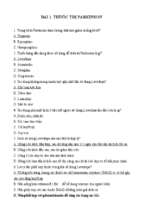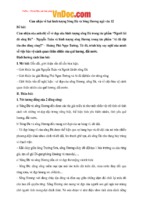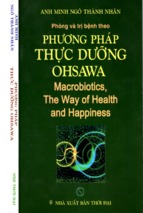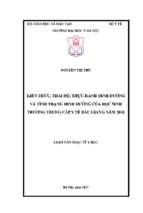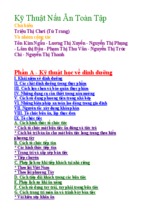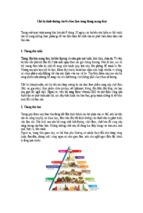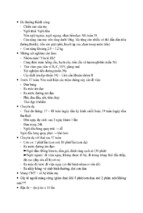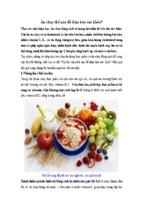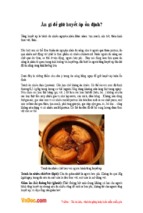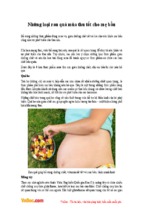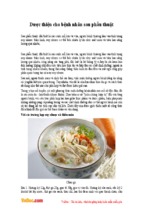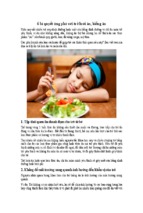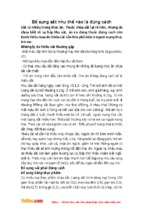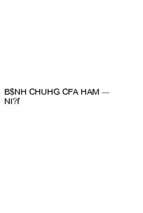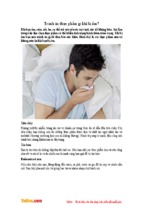International Journal of Community Medicine and Public Health
Deka C et al. Int J Community Med Public Health. 2016 Aug;3(8):2169-2173
http://www.ijcmph.com
pISSN 2394-6032 | eISSN 2394-6040
DOI: http://dx.doi.org/10.18203/2394-6040.ijcmph20162565
Research Article
A study of nutritional status of adolescent girls residing in urban
slums of Guwahati city, Assam, India
Chandana Deka1*, Achyut C. Baishya2, Jutika Ojah3, Kabita Barua1
1
Department of Community Medicine, Jorhat Medical College, Jorhat, India
Department of Community Medicine, Tezpur Medical College, Tezpur, India
3
Department of Community Medicine, Gauhati Medical College, Guwahati, India
2
Received: 09 June 2016
Accepted: 01 July 2016
*Correspondence:
Dr. Chandana Deka,
E-mail:
[email protected]
Copyright: © the author(s), publisher and licensee Medip Academy. This is an open-access article distributed under
the terms of the Creative Commons Attribution Non-Commercial License, which permits unrestricted non-commercial
use, distribution, and reproduction in any medium, provided the original work is properly cited.
ABSTRACT
Background: Adolescent girl’s health covers morbidity, mortality, nutritional status and reproductive health and
linked to these are environmental degradations, violence and occupational hazards. Adolescent girl’s health also has
an intergenerational effect. With the aim to assess their nutritional status, a cross sectional study was carried out
among adolescent girls of 10-19 years residing in the urban slums of Guwahati city..
Methods: 400 adolescent girls were interviewed from 10 randomly selected slums over a period of one year.
Predesigned pretested semi structured interview schedule was used to collect socio demographic and individual
information of the respondents. Hemoglobin estimation was done using colour scale method.
Results: Out of 400 respondents, 34.75% were found to have a BMI lying between 15 th -50th percentiles of reference
value. 20.00% were found to be below 5th percentile. 33.50% of the total respondents belonged to class IV
socioeconomic status, out of which 47.00% is found to have a BMI of less than 5th percentile. The study shows the
prevalence of mild anaemia to be 28.46%, moderate anaemia to be 57.31% and severe anaemia 14.23% respectively.
The mean haemoglobin of menstruating girls (8.87 gm%) was found to be less than in the non-menstruating girls
(10.15 gm%). There was a positive association between prevalence of anaemia among the adolescent girls and worm
infestation.
Conclusions: Socioeconomic status is seen to have an appreciable impact in the health and nutritional status of the
slum dwelling adolescent girls.
Keywords: Adolescents, Nutrition, Slums, BMI, Anaemia, Worm infestation
INTRODUCTION
Adolescence is defined as period of personal
development during which young people establishes a
personal sense of individual identity and feeling of selfworth, which also includes an alteration of his or her
body image, adaptation to more mature intellectual
abilities, adjustment to society’s demand for behavioural
maturity, internalizing personal value system and
preparing for adult role.1 A transitional period between
childhood and adulthood, adolescence provides an
opportunity to prepare for a healthy productive and
reproductive life and also to prevent the onset of nutrition
related chronic diseases in adult life while addressing
adolescence specific nutrition issues and possibly also
correcting some nutritional problems originating in the
past.2
Poor nutrition starts before birth and generally continues
into adolescence and adult life and can span generations.
Chronically malnourished girls are more likely to remain
malnourished during adolescence and adulthood and
International Journal of Community Medicine and Public Health | August 2016 | Vol 3 | Issue 8 Page 2169
Deka C et al. Int J Community Med Public Health. 2016 Aug;3(8):2169-2173
when pregnant more likely to deliver low birth weight
babies. In order to break the intergenerational cycle of
malnutrition, a special focus needed for overcoming
adolescent malnutrition especially among the girls.3 Over
the past few years India’s urban population has increased
manifold which is presently around 28%.4 With rapid
urbanization and having one of the highest growth rates
in the world, majority of the urban population is forced to
reside in the slums.
The rapidly changing socio psychology, monetary
backwardness and burden of uncontrolled population
explosion in slums make the adolescent girls vulnerable
to malnutrition, infection and social abuse.5 Keeping
these facts in mind and realizing the need for a
community based data, the present study was undertaken.
Limitation of the study was this paper deals with only a
few vital aspects of the parent study.
scale (bathroom type) to measure the weight. General
clinical examination was done for assessing any
deficiency signs. The BMI was calculated for the
corresponding weight (in kg) and height (in meters) using
the following formula: BMI = Weight in Kg/ Height in
meter2
Ethical clearance
Before commencing the field work, necessary approval
for conducting the study from the Institutional Ethics
Committee of Gauhati Medical College and Hospitals,
Guwahati has been obtained. Data collected was entered
in Microsoft Office Excel and analyzed using SPSS
version 17.0. Chi square test was used for analysis of
categorical variables.
RESULTS
METHODS
Study subjects
Study type, Study area and Study population: It is a
community based cross sectional study done in the urban
slums of Guwahati city for a period of one year from
August 2011 to July 2012. The study population
comprises of adolescent girls in the age group of 10 to 19
years residing in the urban slums of Guwahati city. All
resident adolescent girls in the age group of 10-19 years
in the selected slums (residing for > 6 months) were
included in the study. Pregnant and lactating adolescent
mothers and non-resident adolescents (e.g. visitors) were
excluded from the study.
Out of the 400 adolescent girls surveyed, 309 (77.20%)
had attained menarche at the time of survey. 134 (33.5%)
girls belonged to families having class-IV socioeconomic
status, followed by 32.80% in class- III, 24.50% and
9.20% in class-II and class I respectively.
Sample size and sampling design
The sample size has been calculated based on the
assumption that prevalence of any morbidity among the
adolescent group at a given point of time is 50% because
it shall yield the largest value of “n”, when the level of
precision “L” is fixed.3 Applying the formula n=4pq/L2,
the sample size for this study came out to be 400 (n=400).
Slums were taken as the primary sampling unit in the
study. Out of a total of 90 slums as per Guwahati
Development Department, Government of Assam, 2009,
10 slums were selected randomly to get the desired
sample size. 40 adolescents from each slum were
interviewed. Within each slum random sampling was
used to select the first household and then subsequent
houses were visited. In each selected household, all the
adolescent girls meeting the inclusion criteria were
included in the study. Consent for hemoglobin estimation
was given by only 274 respondents.
Data collection
Predesigned pretested semi structured interview schedule
was used to interview the respondents. Colour scale for
hemoglobin was used to estimate hemoglobin level,
Stature meter to measure the height, electronic weighing
Nutritional and socioeconomic status of the adolescents
The adolescent girls were assessed for their nutritional
status. 34.75% were found to have a BMI lying between
15th -50th percentiles of reference value. 20.00% were
found to be below 5th percentile.
33.50% of the total respondents belonged to class IV
socioeconomic status, out of which 47.00% is found to
have a BMI of less than 5th percentile. The association of
BMI and socioeconomic status is found to be statistically
significant at 1% level of significance (Table 1).
Stunting and thinness among the adolescent girls
The prevalence of stunting and thinness among the
adolescents of 15-19 years is found to be 22.88% and
25.13% respectively. Among adolescents in the age
category of 10-14 years, stunting is prevalent in 29.10%
and thinness in 15.50% of the girls (Table 2).
Stunting and thinness and socioeconomic status
Majority of the stunted girls were seen to belong to class
IV socioeconomic status (55.17%), followed by class III
(31.03%) and class II (10.34%). Similarly majority of the
adolescent girls with thinness were found to be clubbed
in the class IV status (78.75%) (Table 3).
Haemoglobin status of the adolescent girls
Estimation of haemoglobin was done in only 274
(68.50%) of the study subjects. From the above table it
International Journal of Community Medicine and Public Health | August 2016 | Vol 3 | Issue 8 Page 2170
Deka C et al. Int J Community Med Public Health. 2016 Aug;3(8):2169-2173
can be seen that 92.35% of the respondents were having
haemoglobin less than 12 gm% and only 7.65% of the
subjects were having a haemoglobin level more than 12
gm%.
The present study shows the prevalence of mild anaemia
to be 28.46%, moderate anaemia to be 57.31% and severe
anaemia 14.23% respectively (Table 4).
Table 1: Distribution of BMI of adolescent girls across their socioeconomic status.
Socioeconomic
status
Class-I
Class-II
Class-III
Class-IV
Total
No.
%
No.
%
No.
%
No.
%
No.
%
5
1
2.70
2
2.00
14
10.70
63
47.00
80
20.00
BMI (kg/m2)
15
50
6
13
16.20 35.10
21
55
21.40 56.10
61
40
46.60 30.50
28
31
20.90 23.10
116
139
29.00 34.75
Total
85
15
40.50
20
20.40
16
12.20
12
9.00
63
15.75
95
2
5.40
0
0.00
0
0.00
0
0.00
2
.50
37 (9.25)
100
98 (24.50)
100
131 (32.75)
100
134 (33.50)
100
400
100
χ 2=1.560, df =12, P=0.000N.B. Figures in parenthesis indicates column wise percentage.
Table 2: Prevalence of stunting and thinness among the adolescent girls.
Nutritional
status
Stunting
Thinness
Total
Age (in years)
10-14 (n=213)
No.
62
33
95
%
29.10
15.50
44.60
15-19 (n=187)
No.
54
47
101
Total
( n=400)
%
28.88
25.13
54.01
116 (29.00%)
80 (20.00%)
196 (49.00%)
Table 3: Prevalence of stunting and thinness among the respondents according to their socioeconomic status.
Socioeconomic status
Class-I
Class-II
Class-III
Class-IV
Total
Thinness
No.
1
2
14
63
80
Stunting
No.
4
12
36
64
116
%
1.25
2.50
17.50
78.75
100.00
%
3.45
10.34
31.03
55.17
100.00
Table 4: Grading of haemoglobin of the adolescent girls according to WHO criteria.
Haemoglobin status
Hb. <7 g%
Hb. 7-9.9 g%
Hb. 10-11.9 g%
Hb. >12 g%
Total
Age group (in years)
10-14
No.
%
9
(25.00)
90
(62.07)
18
(25.00)
19
(90.48)
136
(49.63)
Total
15-19
No.
27
55
54
2
138
%
(75.00)
(39.93)
(75.00)
(9.52)
(50.37)
No. (%)
36 (13.17)*
145 (52.90)*
72 (26.28)*
21 (7.65)*
274 (100)
*N.B: Figures in parenthesis () indicates row wise percentage. Figures in ()* indicates column percentage.
International Journal of Community Medicine and Public Health | August 2016 | Vol 3 | Issue 8 Page 2171
Deka C et al. Int J Community Med Public Health. 2016 Aug;3(8):2169-2173
Menstrual status and mean haemoglobin levels
Out of the 274 respondents whose haemoglobin
estimation was done, the mean haemoglobin of
menstruating girls (8.87 gm%) was found to be less than
in the non-menstruating girls (10.15 gm%). The mean
difference between these two groups was found to be
significant at 5% level of significance (Z=12.79) (Table
5).
Haemoglobin status and history of passing worms in
stool
Out of 92.33% of the girls who were anaemic, 96.67%
gave the history of passing worms in stool whereas out of
7.67% who were not anaemic, 3.33% have the history of
passing worms in stool. This is found to be statistically
significant at 1% level of significance (Table 6).
Table 5: Distribution of adolescent girls according to
their menstrual status and mean haemoglobin level.
Menstrual status
Menstruating
Non menstruating
No (%)
309 (77.5)
91 (22.5)
Mean Hb (g%)
8.87
10.15
Z= 12.79
Table 6: Distribution of the adolescent girls according
to the history of passing worms in stool and their
haemoglobin status.
Passing worms
in stool
Present
Absent
No.(%)
No.(%)
Total
No.(%)
Haemoglobin level<
12 gm% 12 gm% and
above
58 (96.67)
2 (3.33)
195
19 (8.88)
(91.12)
253
21 (7.67)
(92.33)
Total
60 (100)
214 (100)
When the prevalence of stunting and thinness across the
age group of the interviewed adolescents was assessed, it
was seen that out of all adolescents in age group 10-14
years, stunting is prevalent in 29.10% and thinness in
15.50%. The prevalence of stunting and thinness among
the adolescents of 15-19 years is found to be 22.88% and
25.13% respectively. In a study conducted among rural
adolescent by NNMB in 2000, it was found that under
nutrition increases in girls up to the age of 12 years and
as adolescence progresses without improvement in their
food intake, it stagnates and results in 40% adolescent
girls being stunted, indicating that the proportion of
stunting increases with age.8
The present study finds a strong preponderance of
thinness and stunting among girls of lower
socioeconomic status. Deshmukh et al in their study on
nutritional status of adolescents in rural Wardha observed
significantly higher prevalence of thinness among
adolescents from families with lower income group than
their counterparts belonging to higher income group.9
Of all the adolescents screened for their haemoglobin
level, it was seen that 92.35% of the respondents were
having haemoglobin less than 12 gm% and only 7.65% of
the subjects were having a haemoglobin level more than
12 gm% in the current study. The prevalence of mild
anaemia was found to be 28.46%, moderate anaemia
57.31% and severe anaemia 14.23% respectively. Studies
conducted by various other authors also shows a greater
prevalence of mild and moderate anaemia compared to
severe anaemia among the adolescents.10,11
The mean hemoglobin of menstruating girls (8.87 gm %)
was found to be less than that of non-menstruating girls
(10.15 gm %). Study conducted by Chaudhury et al 2003
also depicts similar findings.12
274 (100)
χ 2=5.166, df =1, P=0.019
DISCUSSION
Malnutrition is a silent emergency, but the crisis is real
and its persistence has profound and frightening
implications for children, society and future of mankind.6
In the present study, it is seen that out of 92.33% of girls
who were anaemic, 96.67% gave the history of passing
worms in stool whereas out of 7.67% who were not
anaemic, 3.33% have the history of passing worms in
stool. This is found to be statistically significant at 1%
level of significance. Some other studies also highlight
synonymous findings.13
CONCLUSION
BMI of the respondent girls in the study are categorized
according to the socioeconomic status of their families. It
was seen that, 33.50% of the total respondents belonged
to class IV socioeconomic status, out of which 47.00% is
found to have a BMI of less than 5th percentile. The
association of BMI and socioeconomic status is found to
be statistically significant at 1% level of significance. In a
study conducted by Marwah et al in school children from
Delhi, there is a significant disparity in anthropometric
parameters of children belonging to the upper and lower
socioeconomic strata, with upper socio economic status
children being significantly taller and heavier.7
Adolescence represents a transition phase through which
a child becomes an adult. For many of these young
people, adolescence is a healthy transition period during
which they learn values and skills that will benefit them
in future. Although they are considered the healthiest
group in the population, the health and lives of a large
number of teenagers, now and for the coming years, are
endangered. They are marred by poverty, inadequate
education and work opportunities, exploitation, civil
unrest, ethnic and gender discrimination. Rapid
urbanization, telecommunication, travel and migration
International Journal of Community Medicine and Public Health | August 2016 | Vol 3 | Issue 8 Page 2172
Deka C et al. Int J Community Med Public Health. 2016 Aug;3(8):2169-2173
bring both new possibilities and new risk to young
people. These conditions may directly jeopardize health.
In addition there are adolescent specific issues that also
call for specific attention and interventions. Socio
economic factors are seen to play a decisive role in the
health status of the adolescents, community based
approach to meet the nutritional needs of the adolescents,
facilities for proper housing and other government
facilities for urban poor should be made available in the
slums to combat the high level of anaemia among the
adolescents, supplementation of iron folic acid tablets and
periodic deworming should be initiated. Last but not the
least, educating the girl child can break the barrier to her
ability to exercise her right, develop her capacities and to
have access to services and opportunities.
5.
6.
7.
8.
9.
ACKNOWLEDGEMENTS
The authors would like to express sincere thanks to all the
respected faculties and colleagues in the Department of
Community Medicine, Gauhati Medical College for their
valuable advice and suggestions and would also like to
acknowledge and remember with gratitude the respondent
adolescents for their cooperation in the study.
10.
11.
Funding: No funding sources
Conflict of interest: None declared
Ethical approval: The study was approved by the
Institutional Ethics Committee
12.
REFERENCES
13.
1.
2.
3.
4.
Adolescents by Gary M. Ingersoll, 1989.
WHO Nutrition in adolescents: Issues and
challenges for the health sector: Issues in adolescent
health and development, 2005.
WHO. Adolescent Nutrition: A review of the
situation in selected South East Asian Countries,
2006.
Acharya A, Reddaiah VP, Baridalyne N. Nutritional
status and menarche in adolescent girls in an urban
resettlement colony of South Delhi. Indian J Comm
Med. 2006;31(4):302-3.
Singh J, Singh V, Srivastava AK, Suryakant. Health
status of adolescent girls in slums of Lucknow
Indian J Community Med. 2006;31(2):11-5.
UNICEF. State of the World’s Children Report.
Focus on Malnutrition.1998.
Marwah RK, Tandon N, Singh Y, Aggrawal R,
Grewal K, Manik K. A study of growth parameters
and prevalence of overweight and obesity in school
children from Delhi. Indian J Pediatr.
2006:43(11):943-52.
NNMB Technical Report No.20. Report on Diet and
Nutritional Status of Adolescents, NIN ICMR
Hyderabad. 2000;20:1-25.
Deshmukh PR, Guptha SS, Bharambe MS, Dhongre
AR, Maliye C, Kaur S, et al. Nutritional status of
adolescents in rural Wardha, Indian J Pediatr.
2006;73:139-41.
Verma A, Rawal VS, Kedia G, Kumar D, Chauhan
J. Factors influencing anaemia among girls of
school going age (6-18 years) from the slums of
Ahmadabad city. Indian J Community Med.
2004;29(1):25-6.
Chaudhary SM, Dhage VR. A study of anaemia
among adolescent females in urban area of Nagpur.
2008;33(4):243-5.
Choudhary S, Mishra CP, Shukla KP. Nutritional
status of adolescent girls in rural Varanasi. Indian
Journal of Social and Preventive Medicine.
2003:34(1):54-61.
Goel S, Gupta BP. Anaemia prevalence among
adolescents of an urban hilly community. Indian J
Community Med. 2007;32(1).
Cite this article as: Deka C, Baishya AC, Ojah J,
Barua K. A study of nutritional status of adolescent
girls residing in urban slums of Guwahati city, Assam,
India. Int J Community Med Public Health 2016;3:
2169-73.
International Journal of Community Medicine and Public Health | August 2016 | Vol 3 | Issue 8 Page 2173


